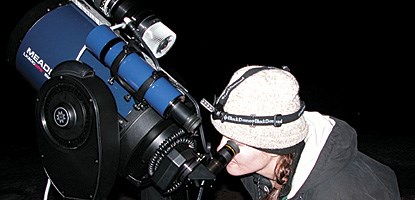
NPS/Neal Herbert The National Park Service Night Sky Team works across the country to document the effects of light pollution. Monitoring is currently taking place in 30 parks, and may expand to 55 parks in the future. The program consists of collecting numerical data over time in order to track the “health” of the resource. The amount of light pollution is measured with a camera that is capable of precisely measuring light levels. Mounted on a robotic Meade LX 200GPS telescope, the camera takes 104 images to capture the entire sky. These images are stitched together, and by subtracting the light emitted by known individual stars, researchers generate a value for night sky darkness. The parks of southern Utah were some of the first to be visited by the Night Sky Team. While most people realize that fewer stars are visible in a city, few probably realize that even remote parks like Canyonlands face the problem of light pollution. Preliminary data has shed light on many facts. Canyonlands has one of the darkest night skies in this ever-brightening country. However, several sources of light pollution can be detected. Casual observers can see lights of Moab, Blanding and Monticello, and the camera detects other light sources which reach high into the sky, eroding the view of the Milky Way and thousands of stars. Much has been done in recent years to ensure Canyonlands visitors can see dark skies in the future. Lighting retrofits can be relatively easy and inexpensive and can also be accomplished on an individual basis. When a light blows out it is a good opportunity to replace the bulb with a lower intensity bulb, or change the fixture to a full cut-off fixture, which directs all the used light downward. Retrofitting outdoor lighting not only helps restore the night sky, but also is environment friendly, energy efficient, and provides more security. Nearly 100 percent of the park's lights are now "night-sky friendly". Natural darkness is also recognized in park management documents which clearly state the value of night skies and the park's commitment to protect them.
2003 Night Sky Monitoring Program Summary [2.5mb PDF, 82 pages] National Park Service Natural Sounds and Night Skies Program |
Last updated: November 13, 2019
